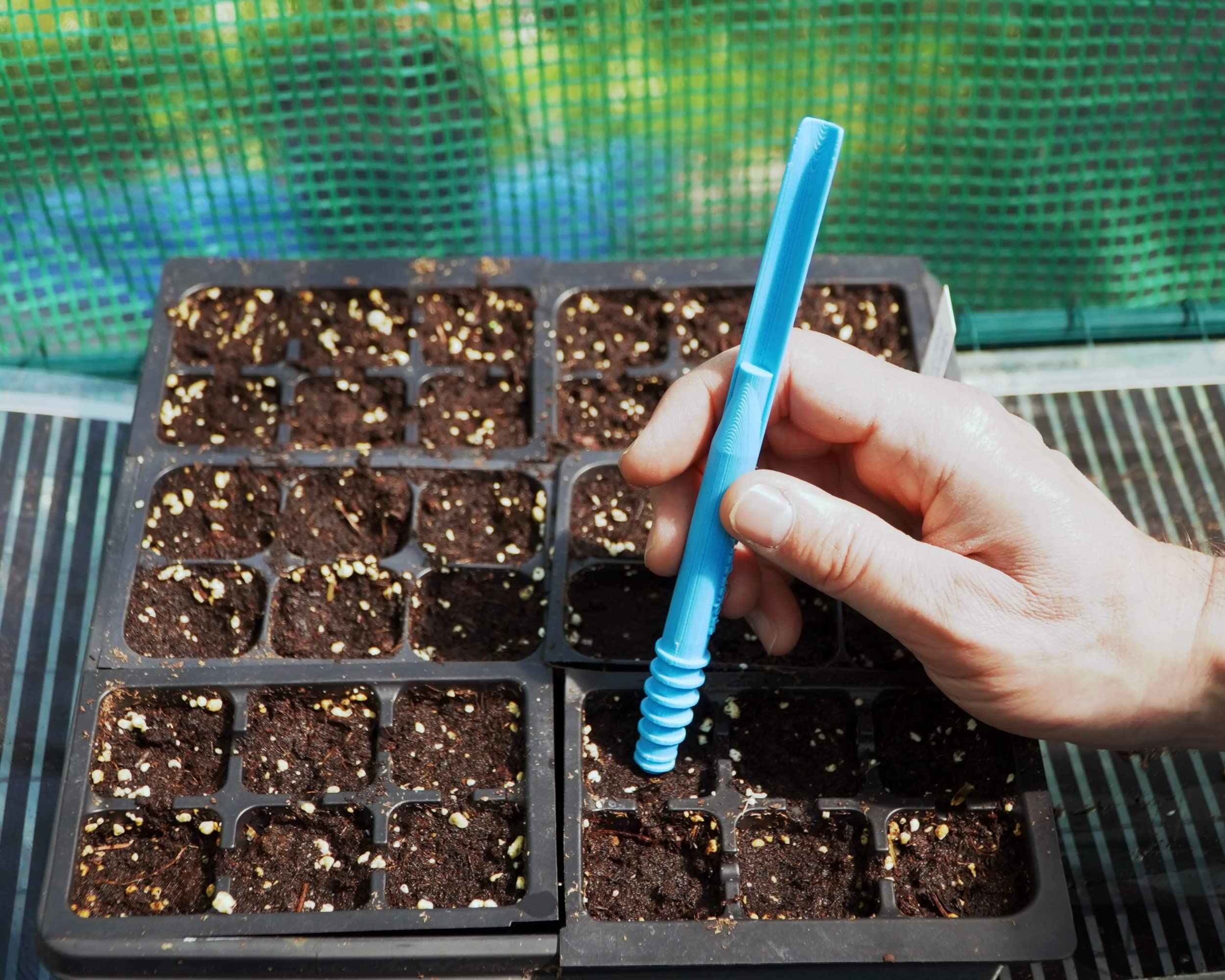Introduction
A garden dibber is a simple yet indispensable tool for gardeners who value precision and efficiency in planting. Whether you’re sowing seeds or transplanting seedlings, a dibber helps create uniform holes quickly, ensuring optimal growth conditions. This article explores the uses, types, and benefits of garden dibbers, offering expert tips on how to choose and use one effectively for a thriving garden.
What Is a Garden Dibber and Why Is It Important?
A garden dibber, sometimes called a dibble or dibbler, is a pointed tool designed to make holes in soil for planting seeds, bulbs, or young plants. Typically made from wood, metal, or plastic, it allows gardeners to avoid damaging delicate roots by creating the perfect depth for planting.
Key benefits of using a garden dibber include:
- Consistent planting depth, which promotes uniform germination
- Faster planting process, especially in larger gardens
- Reduced soil disturbance compared to digging with fingers or trowels
- Improved root establishment due to precise hole size
According to horticulture experts, maintaining consistent planting depth is crucial for seed germination and healthy root development, making the dibber an essential garden tool.
Types of Garden Dibbers and Their Uses
Wooden Dibbers
Wooden dibbers are traditional, lightweight, and easy to handle. They typically have a smooth finish and come in various lengths, suitable for different planting needs. Their natural material offers a comfortable grip and is environmentally friendly.
Metal Dibbers
Metal dibbers, often made from stainless steel or aluminum, provide durability and strength, especially useful in tougher soils. They resist bending and can create precise holes quickly. Some metal dibbers feature ergonomic handles for added comfort during extended use.
Plastic Dibbers
Plastic dibbers are lightweight and affordable, ideal for casual gardeners or beginners. They come in bright colors for easy identification but may lack the durability required for heavy-duty gardening tasks.
How to Use a Garden Dibber Correctly
Using a garden dibber effectively involves a few simple steps:
- Prepare the soil: Loosen the soil to reduce resistance.
- Determine planting depth: Check seed packet instructions or plant requirements.
- Create holes: Press the dibber into the soil to the desired depth.
- Place seeds or seedlings: Drop seeds or carefully insert seedlings into the holes.
- Cover and firm soil: Gently fill in the holes and press the soil to remove air pockets.
Pro tip: For precision, mark the spacing between holes beforehand to ensure plants have adequate room to grow.
Expert Tips for Choosing the Right Dibber
- Consider soil type: Metal dibbers excel in hard or clay soils, while wooden or plastic dibbers work well in softer soil.
- Size matters: Choose a dibber length suited to the depth needs of your plants—longer for bulbs, shorter for small seeds.
- Ergonomics: Select tools with comfortable grips to reduce hand fatigue during prolonged use.
Gardening expert Linda Chalker-Scott emphasizes, “Selecting the right dibber can save time and improve planting success rates significantly.”
Maintaining and Caring for Your Garden Dibber
To extend the life of your dibber:
- Clean after each use to remove soil and debris.
- Dry wooden dibbers thoroughly to prevent rot.
- Sharpen metal dibbers occasionally to maintain a pointed tip.
- Store in a dry place away from direct sunlight.
Proper maintenance ensures your dibber remains a reliable tool for many planting seasons.
Conclusion
A garden dibber is a simple but powerful tool that brings precision, efficiency, and consistency to your planting routine. By choosing the right type and using it correctly, you can improve seed germination and plant establishment. Whether you are a novice or an experienced gardener, integrating a dibber into your toolkit will enhance your gardening success.
Take action today: Assess your gardening needs, select the ideal dibber, and experience how this traditional tool can transform your planting process for better growth and a more bountiful garden.
